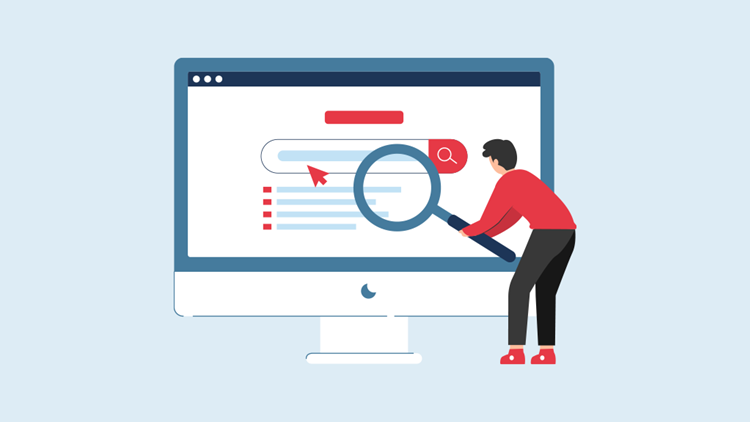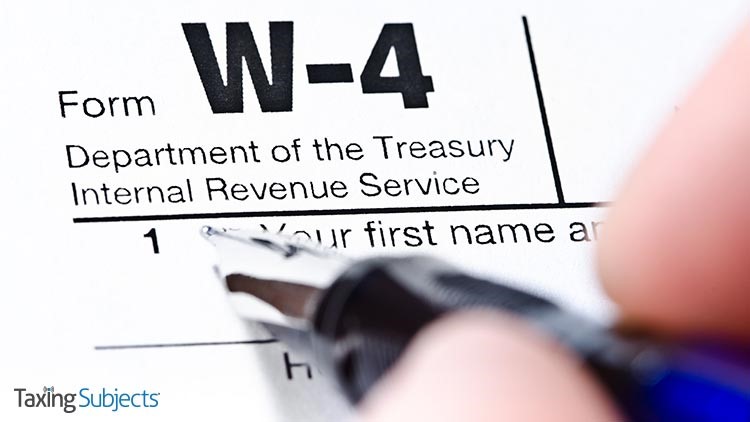by | Jun 7, 2022 | Tax Tips and News
The Internal Revenue Service has once again revised the frequently asked questions (FAQs) for the 2021 Child Tax Credit (CTC) and Advance Child Tax Credit (ACTC). These revisions take into account several changes, including the end of filing season for the 2021 tax year.
The American Rescue Plan expanded the Child Tax Credit to include advance estimated payments during the last half of 2021. While filing season has concluded, some taxpayers can still file a late return to take advantage of the credit.

This new issue of FAQs covers eight topics, including:
- Topic A: General Information: Updated questions 1, 2, 3, 4, 5, 8, 9, 10, 11, 13, 14, 15, 16
- Topic E: Advance Payment Process of the Child Tax Credit: Updated questions 2, 3
- Topic F: Updating Your Child Tax Credit Information During 2021: Removed questions 1, 2 and updated 3,4
- Topic G: Receiving Advance Child Tax Credit Payments: Updated questions 1, 6, 7, 9, 10, 11
- Topic H: Reconciling Your Advance Child Tax Credit Payments on Your 2021 Tax Return: Updated questions 1, 2, 9 and removed 10
- Topic J: Unenrolling from Advance Payments: Updated question 1 and removed 2, 3, 4, 5, 6, 7
- Topic K: Verifying Your Identity to View your Payments 2021 Child Tax Credit: Updated 2, 3, 5, 6 and removed 7
- Topic L: Commonly Asked Shared-Custody Questions: Updated 1 and 2
Complete details for each of the updated topics and questions are available on the IRS website in Fact Sheet 2022-29. The 22-page fact sheet instructs that those with questions should consult the FAQs rather than call IRS assistance lines, as IRS operators do not have any additional information.
The agency also makes it clear that any frequently asked questions are meant to communicate information quickly to the general public, rather than to state official IRS policy or tax law. FAQs, the IRS says, should not be the basis for any arguments or positions before formal legal bodies, such as the Tax Court.
Details of the IRS stance on reliance on FAQs can be found here.
Sources: IRS revises 2021 Child Tax Credit and Advance Child Tax Credit frequently asked questions; Fact Sheet 2022-29
– Story provided by TaxingSubjects.com
by | Jun 7, 2022 | Tax Tips and News
Organizations seeking tax-exempt status with the Internal Revenue Service should know that there is more to the process than merely signing on the dotted line. The process for being declared tax-exempt under Section 501(c)(3) of the Internal Revenue Code can vary based on the applicant organization’s specific situation.
First and foremost, it has to be organized and operated for one of the following purposes defined by the IRS:
- Charitable, religious, educational, scientific, or literary purposes
- Testing for public safety
- Fostering national or international amateur sports competition
- Preventing cruelty to children or animals
Application for 501(c)(3) status is made using a Form 1023-series application.

The Process
The circumstances around the organization determine how simple or complex the process will be. The IRS has created a step-by-step application process guide—but the agency also recently highlighted additional information that can help.
Before filling out the application, candidate organizations should apply for a nine-digit Employer Identification Number (EIN)—even if they don’t have any employees. EINs are issued by the IRS to identify companies and tax-exempt organizations when they file and report taxes, and every 501(c)(3) application requires this number.
To apply for an Employer Identification Number, organizations can simply apply online through the IRS website. Once the Form 1023-series application has been filled out, it must be sent to the IRS electronically using Pay.gov online.
Keep in mind, however, that not every organization seeking tax-exempt status has to apply for 501(c)(3) exemption. Churches (including integrated auxiliaries) and public charities with yearly gross receipts of no more than $5,000 are already considered tax-exempt.
Time and Other Considerations
Just when a candidate organization is deemed tax exempt depends on its Form 1023. “If they submit this form within 27 months after the month they legally formed, the effective date of their organization’s exempt status is the legal date of its formation,” the IRS explains. “If an organization doesn’t submit this form within those 27 months, the effective date of its exempt status is the date it files Form 1023.”
Once an organization has been approved as a tax-exempt entity by the IRS, it is considered a private foundation unless the group can meet the standards to be considered as a public charity. Approval for 501(c)(3) status also brings a responsibility to those in the new tax-exempt organization. As such, charitable organizations have to make certain documents available to the public for their inspection.
Among these public documents are the organization’s application for exemption and its annual information tax returns for the past three years. Publication 557, Tax Exempt Status for Your Organization has more information on public inspection requirements.
Additional information, including help for applying organizations, is available from the IRS website:
Source: Things organizations should know about applying for tax-exempt status
– Story provided by TaxingSubjects.com
by | Jun 7, 2022 | Tax Tips and News
The Internal Revenue Service continues to add functionality to its online tools, now putting more muscle behind its Where’s My Refund? feature. Used more than 776 million times in 2021, it is one of the agency’s most popular online offerings—and it can reduce client questions about refund status.
“Previously, Where’s My Refund? only displayed the status of the most recently filed tax return within the past two tax years,” the IRS explains. Now, users can view information for any of the last three tax years on their status report.

While this additional information will undoubtedly be more convenient for taxpayers with Internet access, it also marks a reduction in phone service that available to callers. The agency notes that those who call the refund hotline will only receive information related to their 2021 return.
Punctuating this shift, the IRS says, “There’s no need to call the IRS to check on refund status unless it has been more than 21 days since the return was filed or the tool says the IRS can provide more information.”
How do taxpayers access Where’s My Refund?
Where’s My Refund? is accessed through IRS.gov or IRS2Go, the agency’s mobile app. The identification verification process requires their Social Security Number or ITIN, filing status for the requested tax year, and amount of the refund they’re checking on, using the original filed return.
The IRS says validated online users of Where’s My Refund? can get the status of a refund within:
- 24 hours after e-filing a tax year 2021 return
- Three or four days after e-filing a tax year 2019 or 2020 return
- Four weeks after mailing a return
For details on a taxpayer’s adjusted gross income, a balance due, or other account information, taxpayers should check their Online Account.
Speeding up 2021 returns
IRS Commissioner Chuck Rettig says the upgrade to Where’s My Refund? can help speed up the processing of TY 2021 returns—especially for taxpayers who chose to request an extension of time to file.
“We encourage those who expect a refund, but requested an extension, to file as soon as they’re ready. We process returns on a first-in basis, so the sooner the better,” said Rettig. “There’s really no reason to wait until October 17 if filers have the relevant information to file now.”
Rettig reminds that electronic filing is available 24 hour per day and his agency is actively taking in returns, processing and issuing refunds.
More improvements to come
If taxpayers are happy with this latest round of upgrades, Rettig said, more improvements are in the works.
“The IRS is committed to identifying opportunities to make improvements in real time for taxpayers and the tax professional community,” said Rettig. “This enhancement to Where’s My Refund? is just one of many.”
Source: IRS updates feature on Where’s My Refund?
– Story provided by TaxingSubjects.com
by | Jun 7, 2022 | Tax Tips and News
A reworked version of Form W-4 has been released by the IRS and the Treasury Department for the 2020 tax year. A number of changes were made to earlier draft versions of the form in response to complaints from tax professionals.
Accounting Today reports Treasury doesn’t expect to make further changes beyond some small inflation-adjustment updates.
The redesigned Form W-4 uses a building-block approach, replacing complex worksheets with straightforward questions, making it simpler for employees to figure withholding accurately. The new form uses the same basic information as the old design, but employs a more personalized, step-by-step approach to better accommodate taxpayers.
Accounting Today reports the redesign will not force employees to resubmit a Form W-4 simply because of the update. Employers can continue to figure withholding based on information from the most recent W-4 submitted.
Complaints from Tax Pros
The complaints about the draft version of the form, Accounting Today reports, came from accountants and tax practitioners alike, who said the draft version required taxpayers to reveal too much information to their employers about outside sources of income for employees and their spouses.
The tax reform package passed in late 2017 eliminated traditional exemptions for taxpayers and dependents along with a long list of deductions, increasing the standard exemption amounts instead. The IRS urged taxpayers to do a “paycheck checkup” last year to make sure enough was being withheld from the taxpayers’ paychecks, but few taxpayers went through the complicated process. As a result, many taxpayers found themselves owing tax because of inadequate withholding.
The IRS is urging taxpayers to do another withholding checkup this year to make sure the correct amount is withheld from their paychecks. The agency has also come out with a new Tax Withholding Estimator online tool to help.
– Story provided by TaxingSubjects.com
by | Jun 7, 2022 | Tax Tips and News
According to the IRS, self-employed taxpayers should use the Tax Withholding Estimator when they perform their next “paycheck checkup.”
IR-2019-149 is the latest press release advertising the Tax Withholding Estimator, the agency’s newest online tool: “The estimator is an expanded, mobile-friendly online tool that replaced the Withholding Calculator, which since 2001 had offered workers an online method for checking their withholding.”
The IRS stressed that they needed to develop a new resource to help even more taxpayers manage their tax withholding: “The old calculator lacked features geared to self-employed individuals; the new estimator made changes to address this important group.”
Why Should Taxpayers Perform a Paycheck Checkup?
Tax withholding outreach was a focus of the IRS due to the implementation of the Tax Cuts and Jobs Act. As the IRS explains in Publication 5307, “the Tax Cuts and Jobs Act changed the way taxable income is calculated and reduced the tax rates on that income.” That meant “the IRS had to address and make changes to income tax withholding in response to the new law as soon as possible after it passed.”
Despite a year-long series of press releases reminding taxpayers that they might need to adjust withholding to address these changes, some tax professionals reported clients seeing surprise tax bills. Using the Tax Withholding Estimator is just one way taxpayers can avoid that problem, and accessing it is relatively easy.
How Does the New Tax Withholding Estimator Help Self-Employed Taxpayers?
The Tax Withholding Estimator helps self-employed taxpayers calculate their withholding by letting them enter information that wasn’t accepted by the old calculator: “The estimator allows a user to enter any self-employment income, including income from side gigs or the sharing economy, in addition to wages or pensions.”
Those who regularly used the old IRS Withholding Calculator will notice a number of improvements when they pull up the new Tax Withholding Estimator. Here’s the list provided by the IRS:
- Plain language throughout to improve taxpayer understanding.
- The ability to target either a tax due amount close to zero or a refund amount.
- A new progress tracker to help a user know how much more information they need to enter.
- The ability to go back and forth through the steps, correct previous entries, and skip questions that don’t apply.
- Tips and links to help the user quickly determine if they qualify for various tax credits and deductions.
- Automatic calculation of the taxable portion of any Social Security benefits.
Taxpayers concerned that they won’t pick the correct withholding form after getting the results of the estimator don’t need to worry. The IRS said that users will be given a link to the form corresponding to their entered information—Form W-4 for employees or Form W-4P for pensioners.
Source: IR-2019-149
– Story provided by TaxingSubjects.com








